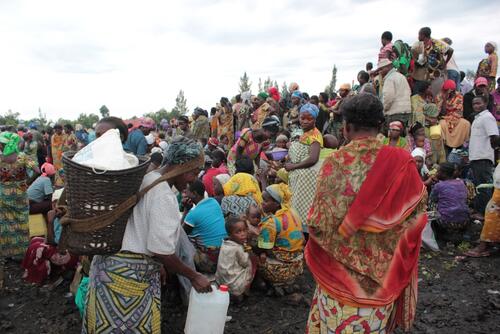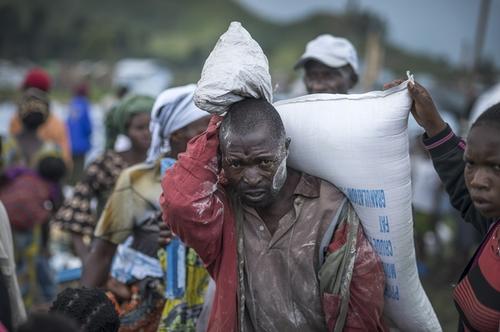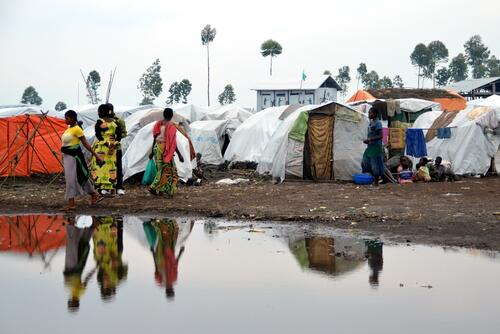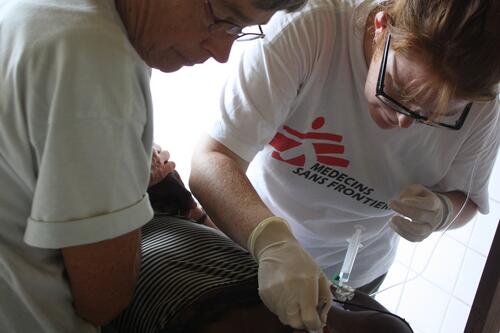More than 100,000 people are living in extremely poor conditions in the area around Goma. Since mid-November, clashes between the Democratic Republic of Congo’s (DRC’s) armed forces (FARDC) and M23 rebels have resulted in a massive new wave of displacement. The people of North Kivu are very familiar with having to take to the road, as violence has been commonplace in the region for nearly 20 years.
A huge crowd breaks up to let the Médecins Sans Frontières (MSF) vehicle approach, and closes again as it passes. It is food distribution day at Mugunga III camp. The entire population of the camp seems to be here.
Several people stand apart, at the bend of an alley, watching the hustle and bustle at the entrance to the camp. “My bloc already received its food rations, but everything was stolen,” says Venatie. The camp was plundered the day after rations were distributed in the area where Venatie is living. “It was 11pm. The men forced their way into the shelters and took everything – blankets, food, cooking pots. They took everything they found.”
Charline is the president of Mugunga III camp. She is overwhelmed. Everyone needs her help. She manages the camp with boundless energy. “The population more than doubled within a few days,” she says. “It’s very complicated to manage but I fight to defend our interests because, like everyone else here, I know what it’s like to be displaced and experience violence and suffering.”
As the rebels advanced on Goma, some of the displaced people who had gathered in the Kanyaruchinya camp after M23’s July attack on Rutshuru moved to the camps west of Goma, swelling their population. Others remained, not knowing where to go. But when the first fighters arrived with a loudspeaker mounted on a truck, advising them to flee to Mugunga camp, they quickly made up their minds. They fled so fast that one woman was unable to stop and care for her son when he fell. “He fell as we were fleeing,” she recalled. “I barely had time to scoop him up and keep running.” When she arrived at the health centre at Mugunga III camp several days later, his upper lip was still swollen and his teeth were still battered.
More than 100,000 people are living in very difficult conditions. “When the rebels arrived, I fled with the others,” said Béatrice, a 22-year-old woman who is alone in the camp with a young child. “We left so quickly that I couldn’t take anything with me. I have nothing here, not even shelter.”
Assistance is being organised in the camps, but remains inadequate. Food distributions do not cover all needs. Few people therefore prefer to risk returning with no certainty of getting back home. They often end up being housed with host families – themselves victims of violence – where living conditions are scarcely better.
MSF is working in five camps around Goma, providing basic medical care to displaced people and monitoring and treating malnutrition and cholera. Measles vaccinations have been administered in some of the camps. The teams also offer treatment for victims of sexual violence and run mobile clinics to provide care to people who return home.
In addition to medical activities, MSF has distributed water and basic supplies and is building and restoring health facilities. However, the needs are still great, particularly for food, shelter and utensils for daily living.






